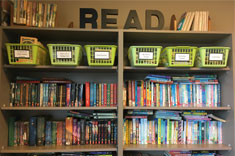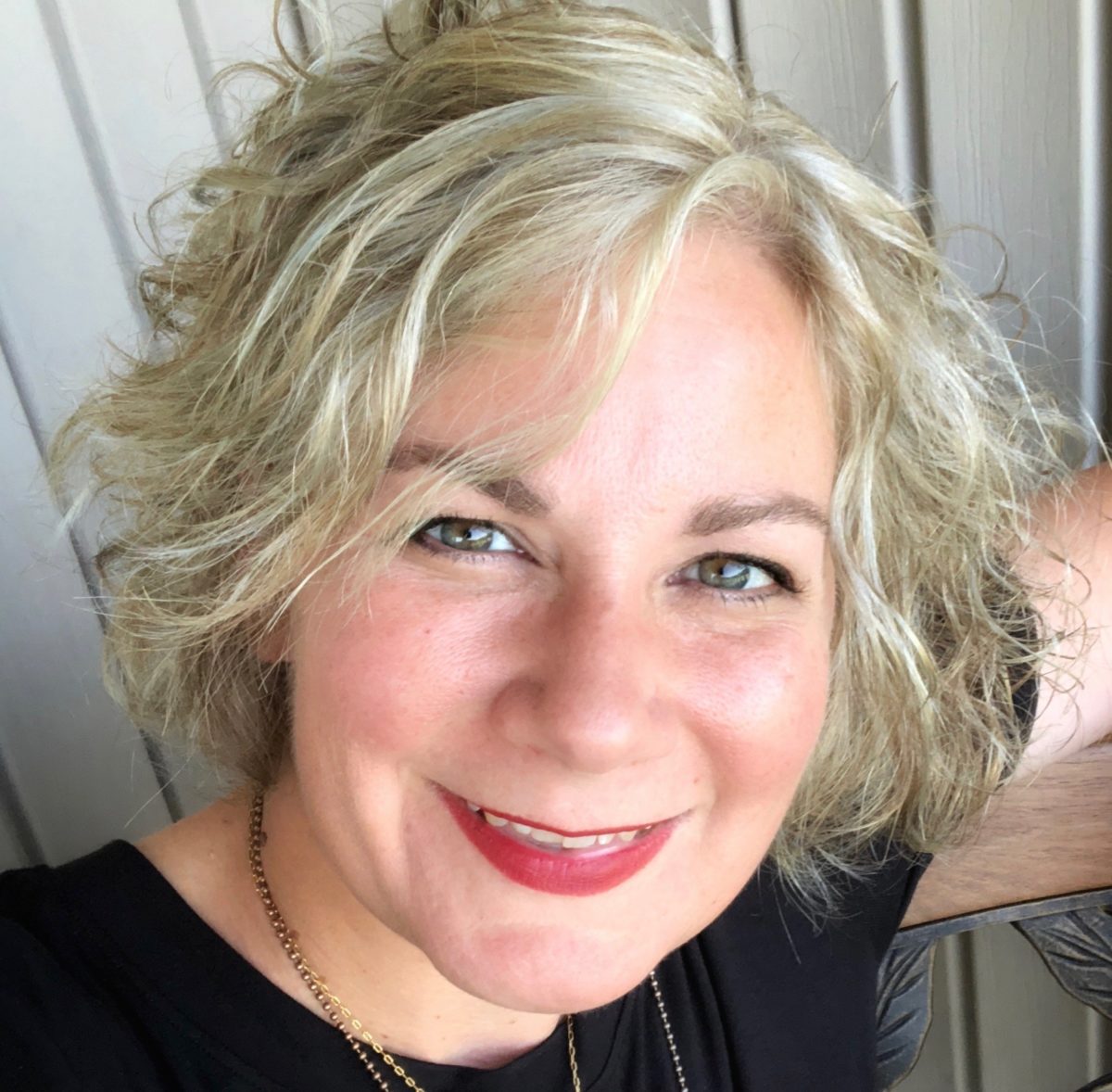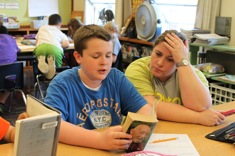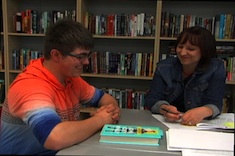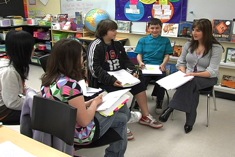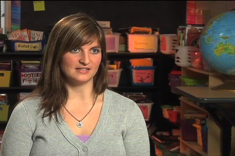I once met a 16-year-old star quarterback who loved Nicholas Sparks books. In the early days of the school year, as I was getting to know students as readers, I instantly noticed his 6-foot, 3-inch body stretched out on his back, with The Notebook by Nicholas Sparks held above his nose. He was in the middle of the book, which I thought was odd, because it was the first day of independent reading.
I decided to watch for a few minutes before jumping into a conference. I was looking for the telltale signs of a fake reader—flipping pages, eyes darting around the room, falling asleep, or slipping a phone into the spine of the book. Instead, he seemed to be engaged, unlike his buddy, who was tossing small paper wads at him. He cut his eyes to his friend and whispered, “Cut it out.” Then he shifted to his side, putting his back to his friend and propping himself on his elbow while he held the book on the floor in front of him.
He looked like an authentic reader. Yet he was in the middle of the book, which waved warning flags of a fake reader who just opens a book to any page to appease the teacher. I slid to the floor next to him and tapped his book. “How’s it going?” I asked.
“Good,” he said without lifting his eyes from the book. “I stayed up too late last night reading this, so my eyes are burning, but it’s worth it.”
I didn’t answer, wondering if he was joking. Because silence is often uncomfortable to teenagers, he lifted his eyes to me and said, “What?”
“Is this your book?”
“No, it’s from your library.”
“When did you get it?”
“The first day of school. I saw it on my way out the door and grabbed it. Is that okay?”
I nodded and asked, “Why did you take it?”
“Because I wanted to read it.”
I chuckled. “Why?” I asked.
He chuckled too. “An English teacher is asking why I want to read a book?”
He smirked, and I did, too.
Although I often doubted him because he was a good-natured jokester, I soon found that he was also an authentic reader. All semester he surprised me. Not only did he love Nicholas Sparks, but he would announce it often and try to get everyone to read a Nicholas Sparks book. He consumed books faster than I did, and he was willing to try new authors and new genres. Near the end of the semester, he began tackling a list he’d found called “25 Books Every Man Should Read Before 25.” It was filled with classics and also contemporary fiction, graphic novels, memoir, and literary nonfiction.
Sometimes I wonder what would have happened if I hadn’t chuckled and smirked with him in our first conference. What would have happened if I had told him he needed to get a book that would “fit” him better, or if I had questioned whether he was really in the back half of the book?
I would never have read Jane Austen’s Pride and Prejudice, because he invited me to read it with him. Imagine, me, a high school English teacher, who had avoided Jane Austen my entire life. (I’ve always had a bit of a rebellious streak when it comes to being told to read a book, as well as a rebellious streak about romance books.) It’s been on my personal-favorites booklist ever since. Sometimes I wonder if it has more to do with reading it alongside a 16-year-old quarterback than it does the story.
I think about him often because he challenged my initial beliefs about the kinds of books I thought my students should choose for independent reading. Sure, I said kids could have choices, but what he made me recognize was that I had parameters in my mind when it came to “right” choices. I didn’t think The Notebook was a viable choice for the star quarterback . . . until I talked with him. He kept reading it, and I learned to listen, not just to him, but to every reader in the room.
Sometimes we teachers are quick with restrictions under the guise of creating the right reading conditions. What I’ve found is that when I allow restrictions to fall back, there are often better conditions that emerge for students to grow as readers. I’ve come to believe that if 16-year-old star quarterbacks can read and love Nicholas Sparks books, then there are likely other surprising reading preferences that will allow adolescents to grow as readers.
It is time to challenge ourselves to be more open to the books that live in our secondary libraries. How can we create dynamic libraries that allow books to see more action in the hands of secondary students? One way is to look at the restrictions we’ve defined for our secondary readers. Think about the books you are tempted to say no to putting in the hands of teenagers, and then add them to your library. Here are a handful that make an excellent place to begin.
Graphic Novels
Although heavy on pictures, graphic novels take attention and focus to make sense of the text. Because of the nature of illustration, meaning is often created in deep ways that allow students to think about the theme. Graphic novels allow many kids to try new genres such as science fiction, memoir, or fantasy, which lead to reading books in traditionally text-heavy genres.
Picture Books
Picture books help build background knowledge about complex topics. Picture books are one way to help students develop a wider lens through which to view the world. They also allow students to slow down their thinking process and notice literary elements that lead to deeper understanding of complex themes.
Middle Grade Novels
Middle grade novels often tackle complicated tensions in relationships and cultures in quiet and nonthreatening ways. They allow space for adolescents to test out and develop their worldviews.
Nonfiction “Coffee Table” Books
Pick interesting topics like sea creatures, medical mishaps, or junk food to add some fun and interest to your classroom library.
Classics
Make sure the classics in your library do not look archaic. Select covers that are trendy, and even add a few classics rewritten as graphic novels or with modern language to your library.
Poetry
Days are filled with events and stress for many adolescents. Having access to poetry will calm them and make reading time seem manageable. Poetry allows students to think abstractly and deeply about important themes in their lives.
Committing to supporting choice in independent reading means rethinking some of the restrictions we put on adolescent readers.

